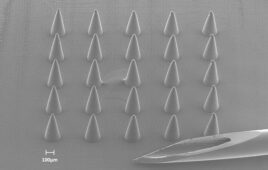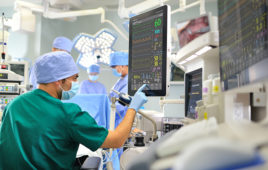Although scientists have already played around with combining tissues and electronics to 3D print an ear a couple of years ago, there’s been no clear movement toward making functional internal organs and tissues as of yet.
Watch: The Impact of 3D Printing on Healthcare
One of the issues with printing intricate organic structures like blood vessels and organs is that they collapse under their own weight before they solidify. Now, researchers at the University of Florida – Gainesville might have moved the dial in the right direction. They have developed a method of printing complex objects in gel that could pave the way to our 3D printed organs of tomorrow.
The gel smoothly transitions between fluid and solid states, acting as a scaffold to hold a structure in place during the printing process. While tracing out spatial paths with an injection tip, the granular gel fluidizes at the point of injection and then rapidly solidifies, trapping injected material in place.




